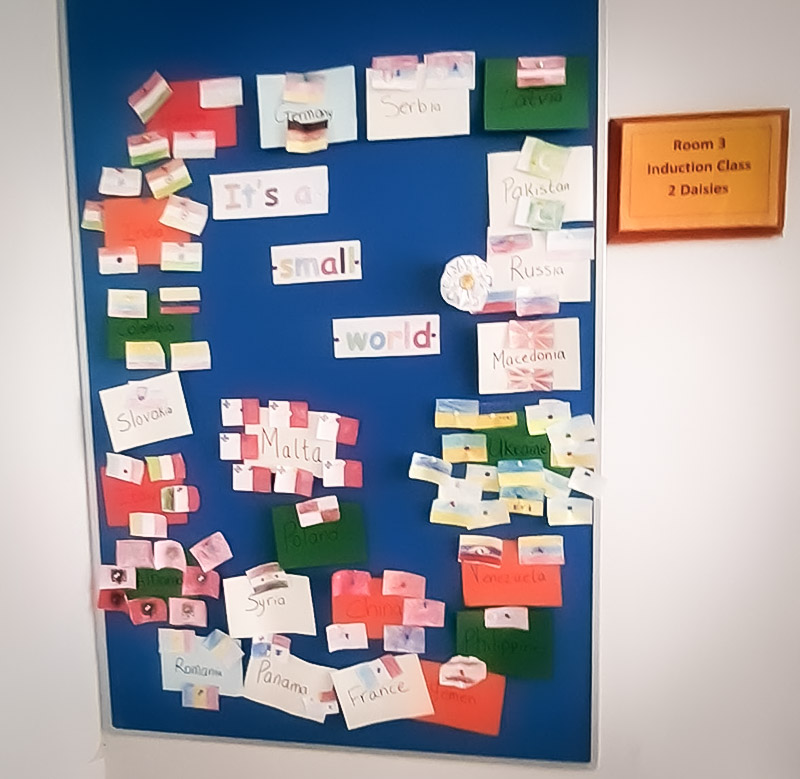by Silvia Raldi
Even in Malta, in a school context where teaching and learning are full of challenges, the Litigare Bene method proves to be a valuable resource. During the learning week in Croatia, I had the opportunity to talk to Amanda Mizzi, a Maltese teacher, who participated in the workshop held by Elena Passerini on Daniele Novara’s Litigare Bene method. I asked her to answer a couple of questions and she was enthusiastic.
Hi Amanda, would you like to tell me what you do?
Hi, I am Amanda Mizzi, I am from Malta and I teach at Maria Regina College Naxxar Induction Hub, a school for migrants. When migrants arrive in our country they don’t know any of our languages (Maltese and English), we teach them so that after a year they can attend our traditional schools.
When did you become acquainted with the Litigare Bene method?
I started following the Erasmus+ program in 2022, and with my group, we started working on it, although we need more training. In our group, we have a tool, Friendship Cards, that is multilingual, but often our students need help reading. While the Friendship Cards are hard to use at first, we eventually use them hand in hand with the Litigare bene method, especially to teach emotional literacy. There is a card We agree to disagree, too. We can use the Litigare Bene Method right away: the students can sit opposite each other and start discussing. We have found that our students have very different levels of education: it depends not only on their ability but also on their cultural background. We have started to use project-based learning with them (an approach to teaching that puts more emphasis on learning from complex experiences, oriented towards achieving a specific goal or objective) where we use a program to teach maths where the students have to produce an object and then sell it. They have to start with the budget, think about where to get the material, plan how much to spend, create the product, go and sell it, and calculate the profit, like a small business.
You have students of what age?
They are from secondary school, in this particular case we have boys and girls aged 13, 14 and 15 together. There are 45 students in total, divided into three classes, each with its teacher.
How many nationalities are there in your classes?
We can easily have students of 25-30 different nationalities in a group of 45. We started to notice that children from some countries were very good at maths, others from other countries were not, because they had not had the same training. When they were working together, those who were, so to speak, more ‘brilliant’ in maths would say to the others: “You are stupid, you don’t know how to do these basic things in maths!” This was not right. So we started looking for something that the others were also ‘good’ at, such as creating a product by hand. We asked the ‘smart’ students to say each student’s name and say what they were good at. When it was the turn of the others to say something about the “smart” ones: “You’re good at maths, but not at other things!” the disagreements began, but also saying things like: “It’s true, I’m good at maths, I called him stupid, but he’s better at this than me”. When we asked them: “How does it make you feel to be called stupid?” the answer was: “I didn’t want to call him stupid, because I know how I felt when I was called stupid”.
They started to recognize that everyone was good at something, so we started to have a lot more cooperation, the children started to share tasks, to live as a community in the classroom. This was a significant experience.
Do you think the use of the Conflict Corner helped you?
When I started I was still not very trained in the use of the Conflict Corner, it was not a real Conflict Corner, because from the moment they don’t know the language well, you can’t leave the kids alone to talk. Now after this experience in Croatia, I feel more trained, this year we will introduce it in a better way, and I will organize the Conflict Corner and send you pictures.
The Litigare Bene Method gave me that necessary help: step by step they started to talk to each other and recognize that one was good at one thing, the other at another, and they started to cooperate in the education system.
Do the children learn to put themselves in each other’s shoes?
Yes, they recognize that everyone has their potential, this is the lesson we teach them with the Litigare Bene method.
That sounds like a great result!
Yes, it is a great result for our class: now they have found agreements, and the group work has improved a lot!
How do you keep students with different languages, cultures, and traditions together?
The most difficult part is concerning cultural traditions: children from some countries look down on others, and they have a kind of superiority complex towards other countries. But here at school, we teach that we are all equal. With this method, the children understand that they are all on the same level, with equal dignity.


